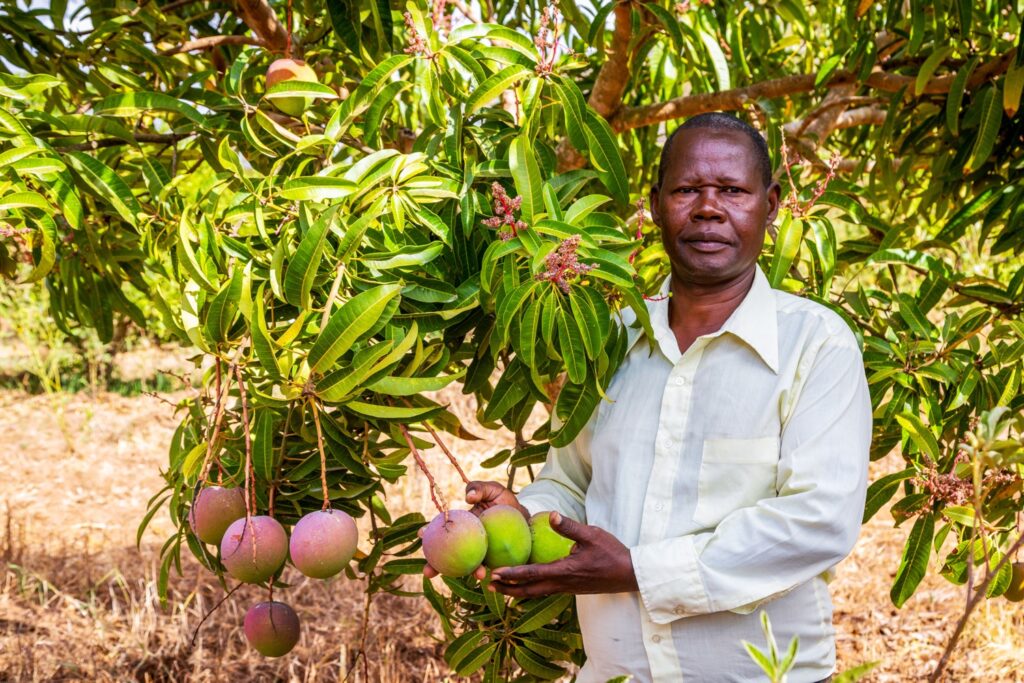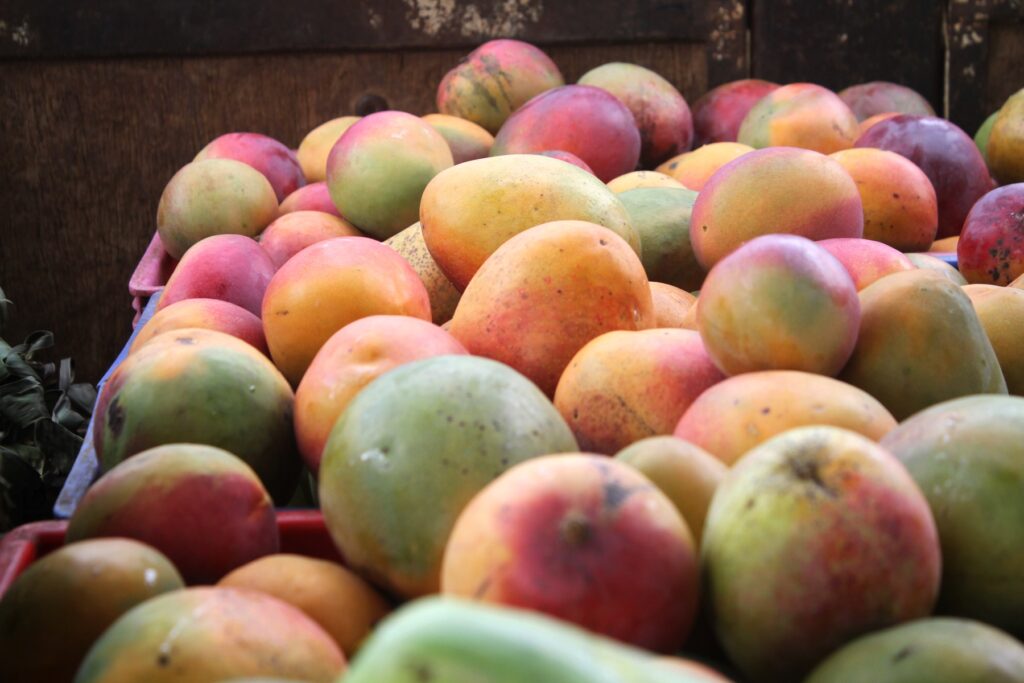mangoes
- Home
- / mangoes
Mango production in Kenya
Kenya has an abundant supply of mangoes and is the largest producer in the East African Community, with a competitive advantage of having amongst the highest mango yields in the world. In 2018, the area under mangoes decreased by 4% from 50,550ha in 2017 to 48,541ha (HCD 2018). However, the value and volume in 2018 increased by 5.8% and 9.7%, respectively, compared to 2017. The cyclic production attributed the increase in volume in mangoes.
The leading counties in mango production as ranked by value were Makueni, Machakos, Kilifi, and Kwale, whose contribution to the total value was 24.9, 17.7, 14.6, and 4.7 percent respectively, in 2018. Mango fruit fly, mango weevil and rust remain the main challenges in the production of mango in the country.

Why the focus on Mango value chain?
- Mangos can be grown in most parts of the country for income generation and poverty alleviation.
- The dual roles of the mango of providing household nutrition and economic development opportunities. Challenges in the Mango value chain
- The main issue affecting the mango value chain is the increasing fruit fly infestations which are causing high losses.
- Poor negotiation power among the smallholders who often feel that the price set by the traders are too low. They also have minimal options to bargain due to the remoteness of their orchards and the perishable nature of the fruit.
- High investments costs due to remoteness and poor quality of roads and transport facilities that create high postharvest losses as well as difficulties in accessing
Nutritional value of Mangoes
In addition to income opportunities, mango fruit is critical in combating nutritional disorders. The mango compares favourably in food value with both temperate and tropical fruits and contains almost all the known vitamins and many essential minerals. The calorific value of mango is mostly derived from the sugars. It is as high as that of grapes and even higher than that of apple, pears, or peaches. The protein content is generally a little higher than that of other fruits except for the avocado. Mangos are also a relatively good source of thiamine and niacin and contain some calcium and iron.


MARKUP interventions in Mango value chain
- Strengthening the capacity of farmer and marketing associations to achieve high net investment index and accelerate industry growth.
- Strengthening cohesion among smallholder mango farmers will also lead to increased negotiating power with traders, and increased opportunities to build long-term relationships with buyers.
- Collaboration with the Government of Kenya at national and county levels and other stakeholders in implementing policy reforms to create an enabling environment for competitive production and marketing.
- Given that quality issues are an emerging constraint in the value chain, MARKUP is collaborating with the government, and private sector stakeholders achieve high standards to enable access to the competitive international and domestic markets.
